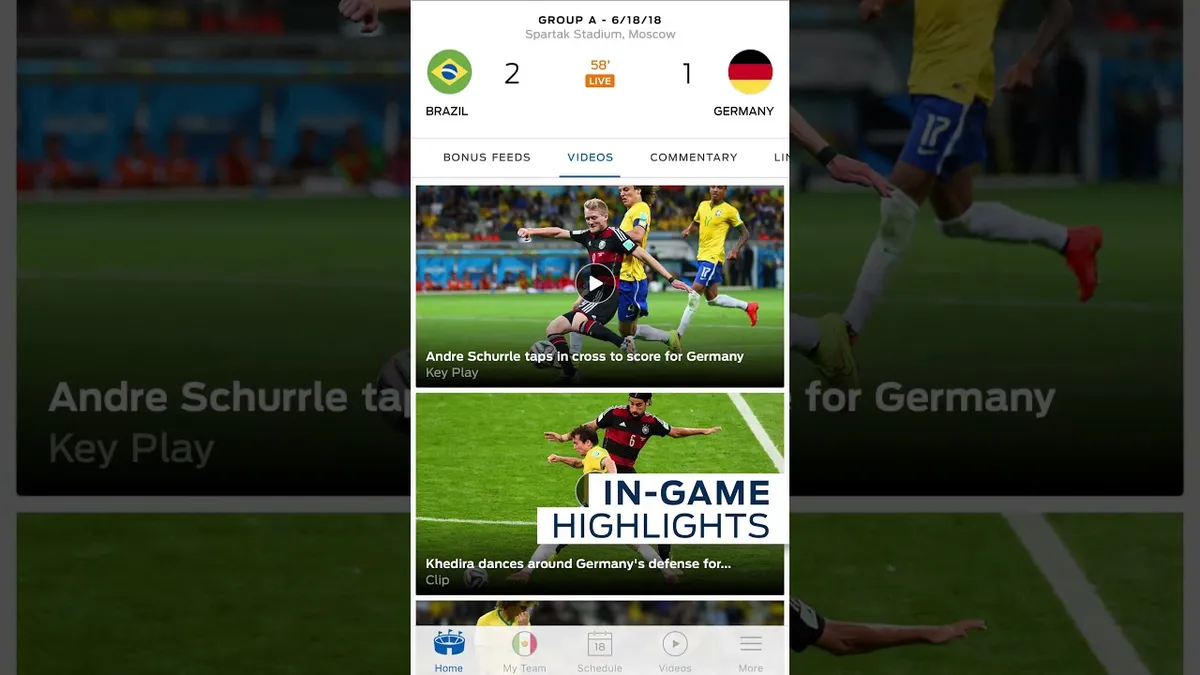The following is a guest post from Mike Kelley, President of Americas at Grabyo.
When it comes to major sporting events, the Super Bowl ranks among the world's largest based on viewership. Across one weekend, the big game attracts one of the most engaged single-event audiences across television screens, mobile devices and social media platforms. In 2018, the game averaged 103.4 million viewers.
This also means that the Super Bowl is an event nearly unmatched when it comes to marketing. Brands and publishers are increasingly spending more time and money to build an association with the event. In 2018 and this year, brands reportedly had to cough up north of $5 million for one 30-second TV spot during the game.
But is this single, brief impression worth the investment? While Super Bowl TV ads might make headlines among industry professionals, are brands actually connecting closely enough with consumers during the game?
Second screen scrimmage
A TV ad might reach a portion of those watching the Super Bowl for 30 seconds during halftime, but what about during the game?
The vast majority of consumers will access content on their second screen — smartphone or tablet — while watching the game, and potentially even more so during commercial breaks and stoppages in play.
Last year, 78% of viewers tuned in to social media at the same time. Of Facebook's 240 million in-game interactions, 90% took place on mobile, while over 2.5 million tweets included the hashtag #SuperBowl.
The potential ROI that lies in social media platforms is significant. If marketers embrace a low-cost, mobile-orientated video strategy, they have the potential to create enriching experiences that supplement the main event and offer far more bang for your buck than a TV spot.
Drafting the MVP
Some standout social video campaigns draft an influencer, or a recognizable celebrity or athlete that more authentically connects with a specific audience. Much of the marketing around the Super Bowl features an influencer to some degree, but the trick is how to best leverage their network and influence.
Brands must get creative. How do we get consumers in the end zone, engaging with our content in real time, and not just passively on an Instagram Story 24 hours too late?
One effective way to leverage social video is through live content. Imagine watching the Super Bowl with friends, while joined by a famous athlete through a social app. At any point, you can ask him or her to comment or take part in a live chat or Q&A. You might also be able to submit your own images and video and have them displayed in the social broadcast.
Creating an original live show like this, or a real-time marketing campaign, can capture the awareness of fans not watching every second on the TV ads and those looking to join in the broader social conversation.
Game plan matters
Configuring content styles and formats to each social platform is critical to optimizing a campaign. Consumers are becoming far less willing to turn their phones sideways to view horizontal videos due to the added friction. This is even less so on a second screen, where watching the game typically takes priority over a social media feed.
Popular social apps Snapchat, Facebook and Instagram are all designed with vertical viewing in mind and are key platforms for social video audiences, including those who may be browsing without sound. Easily accessible live or near-live vertical content can drive major engagement with fans, keeping the viewer from scrolling past your content.
Red zone challenge
While engaging social media campaigns have the potential to steal the show, they also come with unique challenges, especially during a sporting event that generates as much noise as the Super Bowl.
One reason that the annual football championship attracts such a vast audience, even non-sports fans, is because the commercials played during the game are widely anticipated and often extremely entertaining. Brands typically produce their best work during the Super Bowl to make the most out of their pricey TV ad buys. Numerous viewers watch the game each year just for the commercials, and no matter how appealing social content may be, it's an uphill battle to leave a similar impression.
Brands who turn to social media must work twice as hard to ensure each touchpoint counts over the whole weekend, analyzing and improving as they go. Otherwise, they will simply be drowned out by bigger brands that opted to invest in a memorable TV commercial.
Post-game presser
Every big marketing initiative requires some post-analysis and measurement of effectiveness. With this audience size, and the cross-section of demographics across the U.S. and global markets, the Super Bowl requires thorough evaluation. The good news for marketers is that social media channels often provide more actionable data and user insights than TV.
Super Bowl LIII could be the year we see more brands opting for alternatives to expensive TV commercials and commit to creating engaging live social content.






















